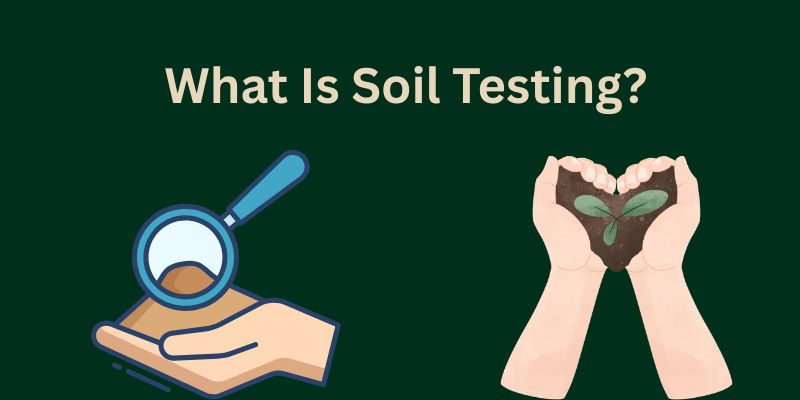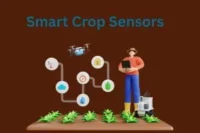Soil Testing: The First Step Toward a Healthier Farm and a Stronger Future
Published: 21 May 2025
You’ve applied fertilizers, followed crop calendars, and watered just right—so why aren’t your yields improving? Could the problem be the soil? But how do you even know what your soil needs or if something’s missing? You’ve probably heard about soil testing, but is it really necessary—or just another technical step that complicates farming? With so much advice out there, it’s easy to feel lost. Maybe it’s time to stop guessing and start listening—to the soil itself.
- So, guys, without wasting time, let’s jump into the article to learn the Soil Testing: The First Step Toward a Healthier Farm and a Stronger Future
What Is Soil Testing?
Soil testing is the process of analyzing a soil sample to determine its nutrient content, pH level, texture, and other characteristics that affect plant growth. It helps identify deficiencies or excesses in the soil and guides farmers and gardeners in making informed decisions about fertilization and crop management.
- Soil testing is a method of examining soil properties.
- It identifies nutrient levels (like nitrogen, phosphorus, potassium).
- Measures soil pH and organic matter content.
- Helps determine soil texture (sand, silt, clay mix).
- Used to guide proper soil management and fertilizer application.

Why Soil Testing Is the Smartest
- Boost Yields: Plants perform better when the right nutrients are present.
- Save Money: Avoid wasting money on unnecessary or incorrect fertilizers.
- Protect the Soil: Prevent overuse of chemicals that damage long-term fertility.
- Sustainability: Supports healthier, regenerative farming practices.
What Soil Testing Tells You
- Nutrient Levels: Is your soil rich or deficient in nitrogen, phosphorus, potassium, etc.?
- Soil pH: Whether your soil is too acidic or too alkaline for your chosen crops.
- Organic Matter: The backbone of soil health and microbial activity.
- Soil Texture: Sand, silt, clay—affects water retention and root development.
Types of Soil Tests
- Basic Soil Test: Measures NPK and pH.
- Micronutrient Analysis: Checks for sulfur, boron, zinc, etc.
- Organic Matter Test: Determines carbon content and soil health.
- Soil Texture Test: Evaluates structure for irrigation and aeration planning.
- Soil Health Test: Advanced test for microbial life and biological activity.
When and How Often Should You Test Your Soil?
- Best time: Before planting a new crop or changing land use.
- Frequency: Once every 1–2 years for accurate soil management.
- Tip: Fall or early spring testing gives the best window for corrections.
- Emotional tone: “The best harvests start months before the first seed is planted.”
How to Collect a Soil Sample
- Use clean tools (trowel or probe).
- Take samples from 6–8 inches deep across multiple spots.
- Mix into one composite sample, air dry, and send to a lab.
- Don’t sample after applying fertilizer or manure.
Where to Get Soil Tested
- Local agricultural extension services.
- Certified soil testing labs.
- DIY soil testing kits (limited but useful for quick checks).
- Emotional appeal: “Treat your land like a partner—get expert advice to guide your care.”
How to Read and Understand a Soil Test Report
- Common components: nutrient levels (ppm), pH, organic matter %, and recommendations.
- Simple interpretation: What’s low, what’s balanced, and what needs fixing.
- Consult an agronomist if needed to build a soil correction plan.
What to Do After Testing
- Use only the nutrients your soil needs—no more, no less.
- Apply lime or sulfur to adjust pH if needed.
- Improve poor soils with compost or cover crops.
- Rotate crops wisely based on your soil’s profile.
- Emotional close: “Soil testing doesn’t just guide your next crop—it protects your land’s future.”
Farmers Who Changed Everything with Soil Testing
- Share one or two short stories or testimonials.
- Highlight how testing saved money, increased yields, or restored soil health.
- Emotional pull: “It wasn’t magic. It was the moment I finally listened to my soil.”
Conclusion:
- Soil testing is a critical tool that helps farmers and gardeners understand what their soil contains and what it lacks. The content covers the definition, benefits, and types of soil tests—ranging from basic nutrient and pH analysis to micronutrient, texture, and organic matter evaluations. Knowing these types is essential for making informed decisions about fertilizer use, crop selection, and soil improvement strategies. By identifying specific soil needs, soil testing supports healthier crops, cost-effective farming, and long-term soil sustainability.

- Be Respectful
- Stay Relevant
- Stay Positive
- True Feedback
- Encourage Discussion
- Avoid Spamming
- No Fake News
- Don't Copy-Paste
- No Personal Attacks

- Be Respectful
- Stay Relevant
- Stay Positive
- True Feedback
- Encourage Discussion
- Avoid Spamming
- No Fake News
- Don't Copy-Paste
- No Personal Attacks





